Frances Morgan - Sight and Sound
"A stunning new British documentary”
Jasper Sharp - Writer and film curator, Midnight Eye
"A mysterious and compelling meditation on sound, song, story, ritual,
performance, nature, tradition and Japanese Buddhism."
Gaetano Kazuo Maida - Executive Director, Buddhist Film Foundation, Inc.
Interview for Season9
Click here to read an interview about the film for the Season 9 blog, which is one of the on-line homes of Woob.
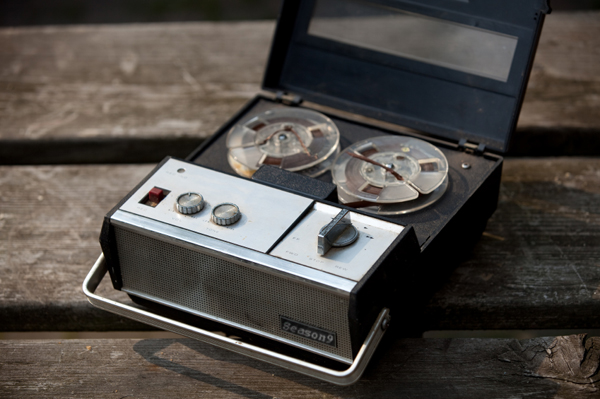
Many thanks to Paul for his long-standing support for the film and involvement in the ReIndications project – there are all sorts of other excellent things on the blog as well so please go and take a look.
KanZeOn in Amsterdam
The pace of screenings continues to quicken as KanZeOn will be shown in Amsterdam at 9pm on Friday 30th September as part of the Off-Centre Electronic Music Festival taking place at the fantastic Melkweg venue. Tim will be travelling there for the weekend to take part in a Q&A session after the screening – please follow this link for more information on the Off-Centre website or there is a Facebook event page here.

Many thanks to the organisers, and Jon Heemsbergen in particular, for all of their efforts, and a big thanks to The SRK for the link-up with this one. It is really a great honour to be part of the same programme as musical legends such as Robert Hood (from Underground Resistance) and Plaid (formerly part of The Black Dog), as well as lots of great new producers such as Jamie XX and Nathan Fake. Promises to be a great weekend all round…
KanZeOn ReIndications released!
Following a long build-up from some of the very first postings on this blog, we are thrilled to finally announce the release of KanZeOn ReIndications – remixes made from the film’s soundtrack. Please have a listen below.
KanZeOn comes to Cork and Edinburgh
We are delighted to announce that KanZeOn will be screened as part of two academic events taking place next week – on Monday 12th September as part of the launch of the Irish Institute for Japanese Studies at University College Cork, and then on Thursday 15th September as part of the Living Buddhism in Retrospect and Prospect Exhibition at the University of Edinburgh.
We are very grateful to Prof Graham Parkes for including the film alongside his programme of presentations by leading scholars in the fields of Japanese Studies and Philosophy to mark this very special occasion of the inaugration of the first academic centre for Japanese Studies in Ireland. It should also be mentioned that a great deal of the background research that went into developing the film grew out of directions suggested by Prof Parkes’ pioneering work in the field of comparative philosophy, and so it is extremely gratifying to have him as an enthusiastic supporter of the film.
Then, we are also indebted to Dr Ian Astley for showing the film as part of a special day’s event to mark the beginning of an exhibition of photographs by Graham Harrison and Dr Ian Astley entitled Living Buddhism in Retrospect and Prospect. Living Buddhism was an illustrated book and accompanying exhibition on the Buddhist religion published and hosted by The British Museum in 1989, with the collection of images by Graham Harrison now having transferred to Edinburgh. These original photographs will also be complimented in this exhibition by recent work from Dr Ian Astley, Senior Lecturer in Japanese Studies at the University of Edinburgh, whose research interest in the Shingon Buddhist tradition has taken him to many sites across Japan, China and Korea. Also speaking as part of this event will be Prof Ian Reader from the University of Manchester, who will be discussing the problems of Temple Buddhism in Contemporary Japan. Again, it is really pleasing to have the film presented alongside figures who did much to inspire and support the original research out of which the film grew, such as Dr Astley and Prof Reader.
Tim goes to Tallinn…
East via Asia film festival,Tallinn,Estonia. www.eastbynortheast.org
The sense of anticipation and excitement was extremely high for the screening inTallinn. We had never seen the film from the digibeta master or indeed with an audience (having missed the world premiere inToronto), and so the double feeling of whether the tape was actually ok and if the audience would even respond positively was massive. I was petrified to put it mildly.
So we arrived the day before to be met by the festivals project manager Helen Merila from the airport and she really set the mood of what a welcoming and culturally rich city Tallinn is, as well as being the most perfect host throughout. Apparently, there were 3 film festivals taking place and as it is the European capital of culture for 2011 then the whole city was filled with galleries, art and exhibitions, a lot of it in its incredible medieval setting in the old town.

Tallinn
Meeting up with festival programmer, Jasper Sharp (http://jaspersharp.com/blog/) , in our luxurious hotel put me even more at ease and he took us to the super cool Kinomaja cinema (http://www.kinomaja.ee/) to see our first film, the pink cinema weirdness of Miss Peach-Huge Breasts. Having missed the punk gig the night before in the same cinema this was still a pretty surreal introduction to the festival at 4 in the afternoon – comedy Japananese porn with a full cinema of Estonians. Not an every day experience for sure.
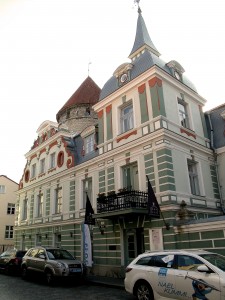
Kinomaja Cinema
That night Yoshihiro Ito (http://www.sabikuro.com/) arrived from Japan – the charming director of a series of wonderful short films to be screened in the session before KanZeOn the following day – so after some Tallinn sushi we explored the old town for local beers then got to know more of this unbelievable realm that looked straight out of a movie set.

So come Saturday and the day of the films. Yoshi’s went down really well with around 90 to 100 in the audience and we were really lucky to have a similar turnout for our 9pm screening. I was so relieved that KanZeOn looked and sounded great in the cinema and to my even greater relief the audience were really positive and responsive afterwards in the rather scary Q and A. Quickly turning the questions on the audience away from myself it was refreshing that they had appreciated the film and had quite a lot to say which apparently is quite unusual for an Estonian audience.
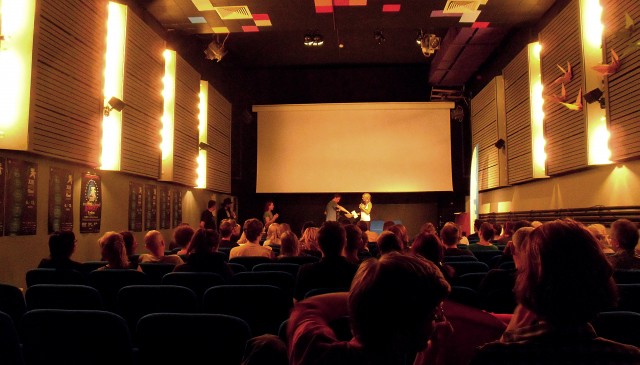
Of course we needed to celebrate so after finding a party on the edge of town right next to where Tarkovsky’s Stalker was filmed (the UN tower still stands and how weird to be next to such an iconic structure- even weirder to be getting trashed on tequilas while next to it!) So popping next door to another party and punk gig, Yolanda – my charming company and moral support for the festival – and I had a manic pogo before the night blurred out of memory.

The final day and we tried to see as much of the town as we could – one particularly notable exhibition was Mati Karmin’s marine mine furniture exhibition. Out of this world. http://www.marinemine.com
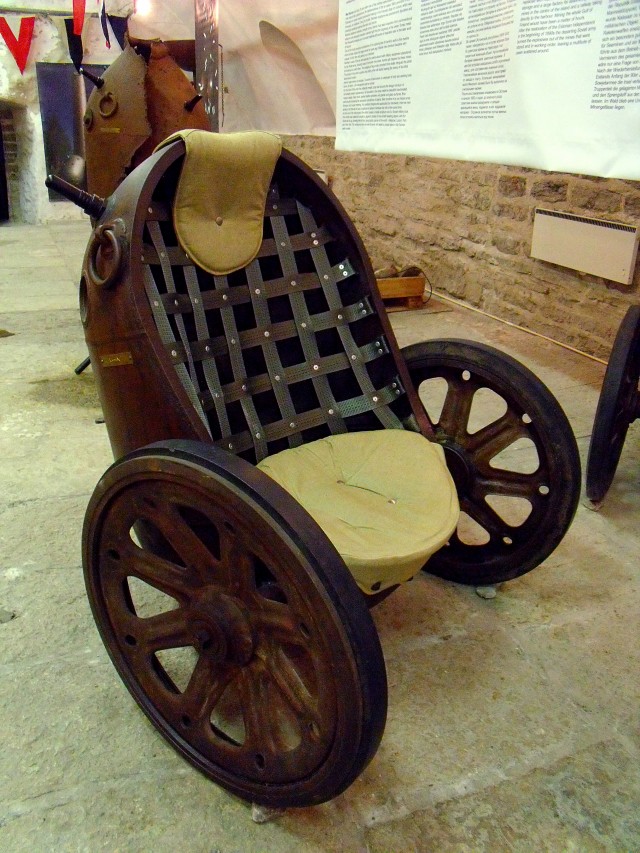
Mati Karmin's marine mine furniture
I urge you to visit this gorgeous city in 2011 (and weep at how far behind the UK feels in embracing diverse culture and thought provoking art in comparison) – big thanks to all the crew in Tallin and special thanks to Piret Mägi for also taking good care of us.
KanZeOn comes to Estonia for Tallinn’s East by NorthEast Film Festival
Review by Marc Saint-Cyr at J-Film Pow-Wow
“KanZeOn: The Magical Potential of Sound,” Neil Cantwell and Tim Grabham’s one-of-a-kind documentary that received its world premiere at this year’s Shinsedai Cinema Festival, is one of those precious reminders of the monstrously underrated, visionary capabilities that lie in nonfiction film. It can certainly be called a documentary, but only in the broadest sense, as its main focus is not opinion, information or narrative, as is usually the case, but mood. Though it does contain interviews, they aren’t carried out in the same old “talking heads” format, nor is the film steered by other obtrusive techniques like scripted voiceover narration or an underlying thesis. Instead, it is made up of an expertly edited stream of imagery and sound that soothingly guides viewers through certain ideas, topics and states of mind, adopting an altogether more poetic approach to reflecting its subject matter.
The film’s full title is “KanZeOn: The Magical Potential of Sound,” illustrating both a foundation in Buddhist ideas (Kanzeon is the Bodhisattva of Compassion) and an open, universal worldview explored through the lens of Shingon Buddhism. Three key people are at the centre of “KanZeOn,” the first being Akinobu Tatsumi, a young priest in a temple outside Kumamoto who is also active as both a beatboxer and a DJ. Eri Fujii specializes in playing the sho, a rare bamboo flute that is said to resemble in both shape and sound the mythical phoenix. Lastly, there is Akihiro Iitomi, a teacher and Noh performer who plays the kotsudumi drum. The film periodically revisits these fascinating individuals as they see to their religious and musical duties and discuss their personal beliefs. Several scenes are devoted solely to them giving special performances: Tatsumi using a portable amplifier to beatbox in the middle of a rope bridge stretched across a deep valley; Fujii releasing shimmering, high-pitched notes from her sho in a sacred cave; Iitomi joining an ensemble performance of the Noh play Kiyotsune. Such sequences serve as direct invitations to appreciate their craft and consider how, each in their own particular way, they express and strengthen their devotion to culture and religion through music.
Much of “KanZeOn” is spent contemplating the special bond that exists between spirituality and sound. At certain points, the connection is made quite direct, whether through a fascinating lesson on proper chanting techniques or the many sequences that focus on priests conducting their prayers. Yet the film’s best moments burrow into the essence of spiritual contentment and its deep roots in both nature and art through mesmerizing, immersive passages that capture and magnify numerous sounds and images. Many of the latter are gathered from elemental sources: gently falling rain, a crashing waterfall, still forests, a full moon drifting across the night sky, a praying mantis shown in close-up. Drifting between these natural phenomena and various holy places, “KanZeOn” constantly maintains an air of respect, curiosity and, not least of all, meditation. The whole film is itself an act of contemplation, it seems, inviting its audience to discover and savor the intricate ties between art, inner peace, nature, tradition and sound. Perfectly fusing spoken ideas with ones illustrated through other means, Cantwell and Grabham display a remarkably sophisticated understanding of cinema and the special ways in which it can guide and shape viewers’ perceptions. What they accomplish here is entirely comparable to Andrei Tarkovsky’s own transcendent, thoughtfully constructed works.
As the above review may indicate, “KanZeOn: The Magical Potential of Sound” is not a film that’s easy to describe – and nor should it be. The key areas it addresses can be very elusive and deep, and all are given the treatment they deserve over its course. The film delivers a very special viewing experience that seems designed to reinvigorate one’s awe and curiosity about the currents of tranquility that course throughout the world. Using expressions of sound as a jumping board, it boldly delves into the many ways in which spiritual contentment can manifest itself, giving off a singular power of its own along the way.
Read more by Marc Saint-Cyr at his blog
World Premiere
So, the world premiere of KanZeOn will take place on Sunday 24th July as part of the Shinsedai Cinema Festival in Toronto.
 Many thanks to Chris MaGee and the Japanese Canadian Cultural Centre in Toronto for organising and hosting the screening, and very special thanks to Jasper Sharp for including the film in this curation and others still to come, about which there will be more exciting news shortly…
Many thanks to Chris MaGee and the Japanese Canadian Cultural Centre in Toronto for organising and hosting the screening, and very special thanks to Jasper Sharp for including the film in this curation and others still to come, about which there will be more exciting news shortly…
KanZeOn ReIndications 5: ManOne
Now that we are readying the KanZeOn ReIndications project for release, it’s time to introduce the penultimate artist who has contributed one of these remixes made out of audio footage from the film.
As well as his superbly twisted take on a Kyogen performance that will be part of the ReIndications release, we are also very grateful to the sound talents of ManOne for other remixes which we have then reincorporated into the soundtrack of the film.
You can get another taste of his skilful reworking of field recordings with the recent release of his TRNZ: Cambodia project,
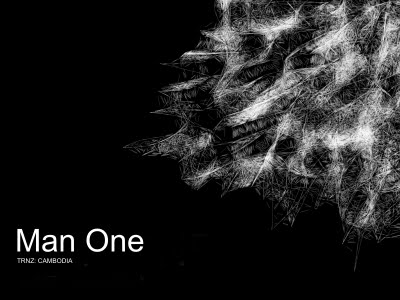
put together with Shaz from The SRK. And as well as producing, he also has his regular weekly OpenSauce show on Oz Radio Jakarta, which you can check out here whenever you might be looking for a nice varied mix of fresh tunes.
Return to Audio Dojo
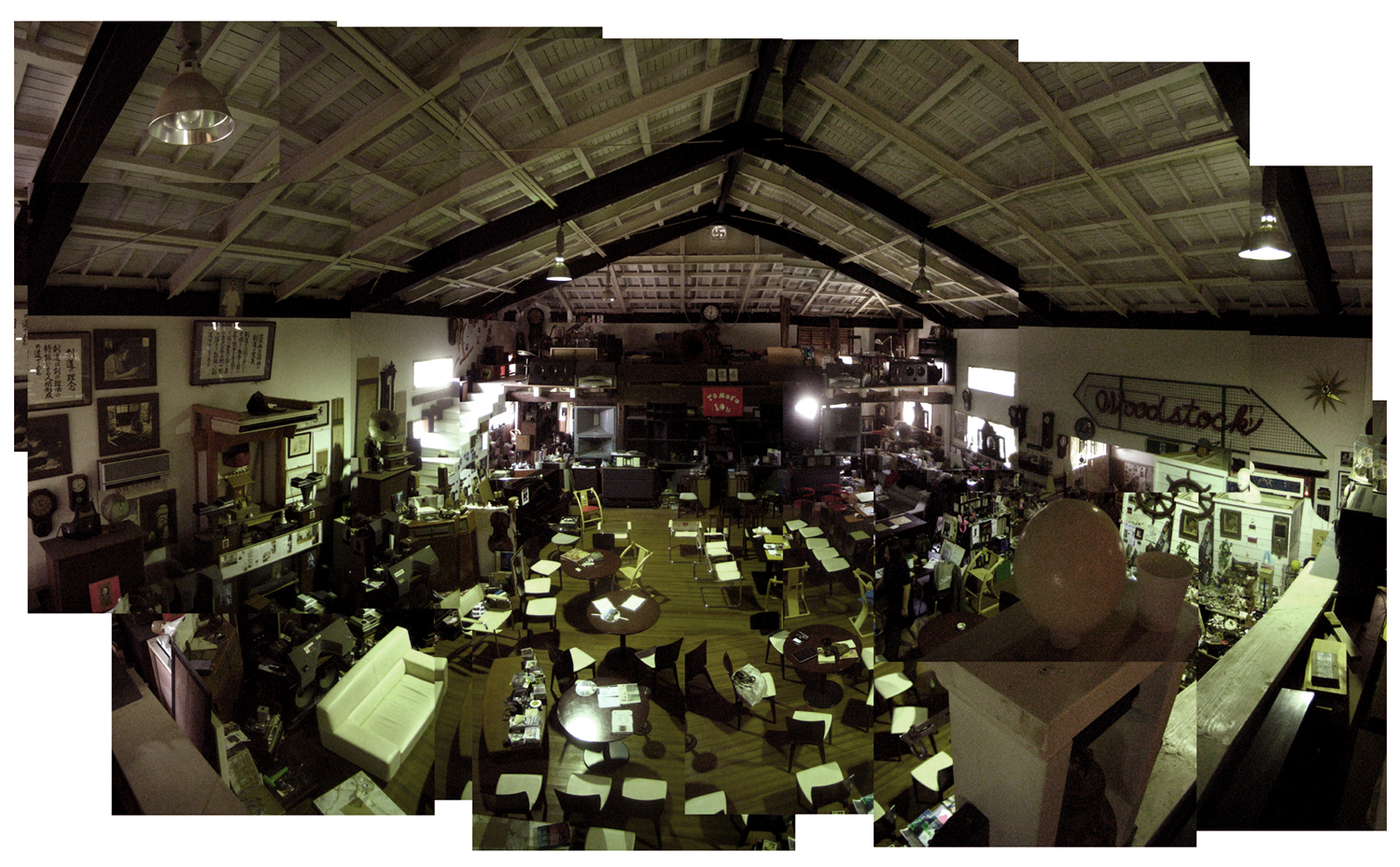
Tim recently returned to the Audio Dojo and went to the wonderful effort of making this photo to give some idea of the scale of the place – tidied up for a concert compared to our first visit but still a spectacular array. Unbeknownst to us previously, this is just one of three or four buildings like it…